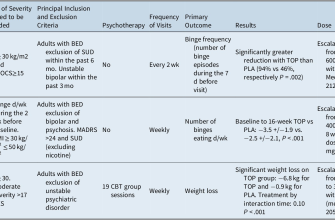No, clindamycin and amoxicillin are not interchangeable. They target different types of bacteria and have distinct side effect profiles. Clindamycin combats anaerobic bacteria and some Gram-positive bacteria, while amoxicillin, a penicillin-derivative, primarily targets Gram-positive and some Gram-negative bacteria. This difference is crucial for treatment efficacy.
Consider the specific infection: Clindamycin often treats skin infections, pneumonia caused by specific bacteria, and certain pelvic inflammatory diseases. Amoxicillin, conversely, is frequently prescribed for ear infections, strep throat, and urinary tract infections. Choosing the correct antibiotic requires accurate diagnosis.
Side effects vary considerably. Common side effects of clindamycin include diarrhea (sometimes severe, potentially Clostridium difficile-associated), nausea, and vomiting. Amoxicillin can cause diarrhea, skin rashes, and nausea as well. Allergies to either drug are also possible, with penicillin allergies being particularly prevalent and potentially serious. Always consult your doctor for proper diagnosis and medication selection to minimize risks.
Never self-treat bacterial infections. Improper antibiotic use can lead to antibiotic resistance, making future infections far more difficult to manage. Always follow your physician’s instructions precisely regarding dosage and duration of treatment. A correct diagnosis and tailored treatment plan are paramount to successful recovery.
- Is Clindamycin Like Amoxicillin?
- Mechanism of Action
- Spectrum of Activity
- Important Differences in Use
- Recommendations
- Drug Interactions
- Different Classes of Antibiotics
- Mechanisms of Action: How They Work Differently
- Clindamycin’s Unique Approach
- Practical Implications
- Spectrum of Activity: What Infections They Treat
- Side Effects: Comparing Potential Adverse Reactions
- Gastrointestinal Issues
- Other Side Effects
- Summary Table
- Reporting Side Effects
- Drug Interactions: Potential Conflicts with Other Medications
- Clindamycin Interactions
- Amoxicillin Interactions
- Appropriate Uses: When to Choose One Over the Other
- Choosing the Right Antibiotic: Consult Your Doctor
- Factors Your Doctor Considers
- Steps to Take Before Your Appointment
- Understanding Your Prescription
Is Clindamycin Like Amoxicillin?
No, clindamycin and amoxicillin are quite different antibiotics, despite both being used to treat bacterial infections. They target bacteria in different ways, and are effective against different types of infections.
Mechanism of Action
Amoxicillin is a penicillin-type antibiotic. It works by inhibiting bacterial cell wall synthesis. Clindamycin, on the other hand, is a lincosamide antibiotic that inhibits bacterial protein synthesis.
Spectrum of Activity
- Amoxicillin: Effective against a wide range of gram-positive and some gram-negative bacteria. Commonly used for respiratory tract infections, ear infections, skin infections, and urinary tract infections.
- Clindamycin: Effective against a range of gram-positive bacteria, including some anaerobic bacteria. It’s frequently used for skin and soft tissue infections, bone and joint infections, and some gynecological infections. It’s less effective against gram-negative bacteria compared to amoxicillin.
Important Differences in Use
- Anaerobic Bacteria: Clindamycin excels at treating infections caused by anaerobic bacteria (bacteria that thrive without oxygen), while amoxicillin’s effectiveness against these is limited.
- Allergic Reactions: Patients allergic to penicillin may be prescribed clindamycin as an alternative, but cross-reactivity is possible (though less common).
- Resistance: Bacterial resistance to both antibiotics is a concern, and appropriate antibiotic stewardship is paramount. The choice between clindamycin and amoxicillin depends significantly on the suspected bacteria and its resistance profile.
Recommendations
Only a doctor can determine which antibiotic is suitable for a specific infection. Self-treating bacterial infections can be dangerous and lead to complications. Always consult a healthcare professional for diagnosis and treatment.
Drug Interactions
Both medications can interact with other drugs. Disclose all medications you are currently taking to your doctor before starting either amoxicillin or clindamycin.
Different Classes of Antibiotics
Clindamycin and amoxicillin belong to different antibiotic classes, impacting their effectiveness against various bacterial infections. Amoxicillin is a penicillin, targeting bacteria by interfering with cell wall synthesis. This class includes other penicillins like ampicillin and piperacillin, each with slightly varied capabilities.
Clindamycin, on the other hand, is a lincosamide. It functions differently, inhibiting bacterial protein synthesis. This mechanism distinguishes it from penicillins. Other lincosamides include lincomycin, though clindamycin boasts broader usage.
Key Differences: Penicillins, like amoxicillin, are generally first-line treatments for many common bacterial infections. However, resistance to penicillin-type antibiotics is growing. Clindamycin offers an alternative, particularly effective against anaerobic bacteria and some Gram-positive bacteria resistant to penicillin. A physician determines the best antibiotic based on the specific infection and the patient’s health.
Remember: Antibiotics are powerful medications. Always consult a doctor before using any antibiotic. Incorrect use can lead to antibiotic resistance and potentially worsen your condition. Self-medicating is risky.
Other Important Classes: Beyond penicillins and lincosamides, other significant classes include tetracyclines (e.g., doxycycline, tetracycline), aminoglycosides (e.g., gentamicin, tobramycin), fluoroquinolones (e.g., ciprofloxacin, levofloxacin), macrolides (e.g., erythromycin, azithromycin), and cephalosporins (e.g., cefazolin, ceftriaxone). Each class possesses unique properties and targets specific bacteria.
Mechanisms of Action: How They Work Differently
Clindamycin and amoxicillin target bacteria in vastly different ways. Amoxicillin, a beta-lactam antibiotic, inhibits bacterial cell wall synthesis. Specifically, it binds to penicillin-binding proteins (PBPs), preventing the formation of peptidoglycan, a crucial component of the bacterial cell wall. This ultimately leads to bacterial lysis and cell death.
Clindamycin’s Unique Approach
Clindamycin, on the other hand, is a lincosamide antibiotic. It acts by binding to the 50S ribosomal subunit of bacteria, preventing protein synthesis. This disruption halts the production of essential bacterial proteins, resulting in bacterial death. This difference in mechanisms means that clindamycin is effective against a range of bacteria resistant to beta-lactam antibiotics like amoxicillin, and vice versa.
Practical Implications
This distinction in their mechanisms of action has significant clinical implications. Doctors choose between clindamycin and amoxicillin based on the suspected infection, the bacteria involved, and the patient’s specific circumstances, including prior antibiotic use and potential allergies. Knowing how each antibiotic functions helps in choosing the most appropriate treatment.
Spectrum of Activity: What Infections They Treat
Clindamycin and amoxicillin target different bacteria. Clindamycin effectively treats anaerobic bacteria, including those causing skin infections like cellulitis and abscesses, as well as some pneumonia and pelvic inflammatory disease. It’s also useful against certain gram-positive bacteria, but its activity against gram-negative bacteria is limited.
Amoxicillin, on the other hand, is a broad-spectrum penicillin primarily effective against gram-positive bacteria such as those causing strep throat, ear infections, and some respiratory tract infections. It also works against some gram-negative bacteria, but its range is narrower than some other antibiotics.
Therefore, the choice between clindamycin and amoxicillin hinges on the suspected bacteria causing the infection. A doctor determines the appropriate antibiotic based on the specific infection and the patient’s medical history. Misusing either antibiotic can lead to treatment failure and antibiotic resistance.
Side Effects: Comparing Potential Adverse Reactions
Clindamycin and amoxicillin, while both antibiotics, present different side effect profiles. Amoxicillin commonly causes gastrointestinal upset, including diarrhea and nausea. Skin rashes are also possible. Less frequent, but more serious, reactions include allergic reactions, ranging from mild hives to life-threatening anaphylaxis.
Gastrointestinal Issues
Clindamycin’s most notable side effect is antibiotic-associated diarrhea, potentially leading to Clostridium difficile infection (C. diff), a serious complication. This risk increases with prolonged use and should be carefully monitored. Nausea and vomiting are also reported, though less frequently than with amoxicillin.
Other Side Effects
Both medications can cause changes in blood cell counts, though this is uncommon. Amoxicillin can affect liver function, while clindamycin has a higher risk of affecting the kidneys. Skin reactions, though less common with clindamycin, can still occur and should be monitored. Rare but serious side effects include allergic reactions, which require immediate medical attention for either medication.
Summary Table
| Side Effect | Amoxicillin | Clindamycin |
|---|---|---|
| Diarrhea | Common | Common (higher risk of C. diff) |
| Nausea/Vomiting | Common | Less Common |
| Rash | Possible | Possible |
| Allergic Reaction | Possible (including anaphylaxis) | Possible |
| Liver Issues | Possible | Less Common |
| Kidney Issues | Less Common | Possible |
Reporting Side Effects
Always report any concerning side effects to your doctor immediately. This information helps medical professionals better understand potential adverse reactions and provides valuable data for future research.
Drug Interactions: Potential Conflicts with Other Medications
Both clindamycin and amoxicillin can interact negatively with certain medications. Always inform your doctor about all medications you are taking, including over-the-counter drugs, supplements, and herbal remedies, before starting clindamycin or amoxicillin. This helps prevent potentially harmful interactions.
Clindamycin Interactions
Clindamycin can interact with muscle relaxants, increasing the risk of muscle weakness. It can also affect the effectiveness of oral contraceptives. Concurrent use with anticoagulants might heighten bleeding risk. Be aware that combining clindamycin with other antibiotics might impact gut flora differently than when using them alone. Discuss these potential problems with your doctor before beginning treatment.
Amoxicillin Interactions
Amoxicillin, a penicillin-like antibiotic, interacts differently. It can reduce the effectiveness of birth control pills. Combining amoxicillin with methotrexate can increase the risk of methotrexate toxicity. Use with certain diuretics might impact potassium levels. This is not an exhaustive list; consulting a healthcare professional is paramount before combining amoxicillin with other medications. Always check with your pharmacist or doctor to ensure the safety and efficacy of concurrent drug use.
Remember: This information is for general knowledge and does not substitute professional medical advice. Always consult your doctor or pharmacist before starting any new medication or combining medications.
Appropriate Uses: When to Choose One Over the Other
Amoxicillin tackles bacterial infections effectively, particularly those affecting the respiratory tract, ears, skin, and urinary tract. It’s a common choice for strep throat, ear infections, and some urinary tract infections.
Clindamycin, however, targets a broader range of bacteria, including those resistant to amoxicillin. It’s frequently prescribed for skin infections like acne or cellulitis, bone infections (osteomyelitis), and infections caused by anaerobic bacteria, often found in deep tissue or abscesses.
Doctors often choose amoxicillin first for its milder side effects and good overall tolerability. If an infection doesn’t respond to amoxicillin, or if the bacteria causing the infection is known to be resistant, clindamycin may be the better option.
Severe or life-threatening infections always require immediate medical attention; the choice between amoxicillin and clindamycin (or other antibiotics) depends entirely on the specific infection, the patient’s medical history, and the doctor’s assessment.
Certain infections, like those involving anaerobic bacteria found in the abdomen or pelvis, are usually treated with clindamycin, while others, such as uncomplicated respiratory tract infections, often benefit from amoxicillin’s efficacy and gentler profile.
Always consult a medical professional for diagnosis and treatment of any infection. They will consider individual factors and test results to determine the best antibiotic for your specific needs.
Choosing the Right Antibiotic: Consult Your Doctor
Don’t self-treat bacterial infections. Antibiotics are powerful medicines, and choosing the wrong one can lead to treatment failure, antibiotic resistance, and potentially serious health problems. Always consult your doctor before starting any antibiotic.
Factors Your Doctor Considers
- Your specific infection: The type of bacteria causing your infection dictates the most suitable antibiotic. A urine test, blood culture, or other diagnostic tools help identify the culprit.
- Your medical history: Allergies, underlying health conditions (like kidney or liver disease), and current medications all influence antibiotic selection to ensure safety and effectiveness. Your doctor needs a complete picture.
- Antibiotic resistance: Antibiotic resistance is a growing concern. Your doctor will consider local resistance patterns when prescribing to maximize the chances of a successful treatment.
- Pregnancy or breastfeeding: If you are pregnant or breastfeeding, specific antibiotics are safer than others. Your doctor will ensure the medication is safe for both you and your child.
Steps to Take Before Your Appointment
- List your symptoms: Note the onset, duration, and severity of your symptoms to help your doctor understand the nature of your infection.
- Document your medications: Create a list of all medications, supplements, and herbal remedies you currently take. This includes over-the-counter drugs.
- Note any allergies: Provide a detailed list of any known allergies, especially to medications. This is crucial for your safety.
Your doctor will perform a thorough examination, ask relevant questions, and might order tests to accurately diagnose your condition and prescribe the appropriate antibiotic. Following their prescribed dosage and duration is crucial for successful treatment and preventing further complications.
Understanding Your Prescription
- Ask questions: Don’t hesitate to ask your doctor about the antibiotic prescribed, its side effects, and what to expect during treatment.
- Complete the course: Finish the entire course of antibiotics, even if you feel better before completing the prescribed dosage. This helps prevent recurrence and antibiotic resistance.
- Report side effects: Contact your doctor immediately if you experience any unexpected or concerning side effects.










